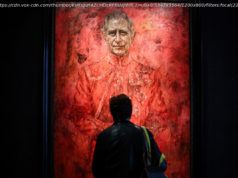 When “Girls” had its premiere on HBO in 2012, it was an instant lightning rod. A dramedy about four 20-something women searching for careers and companionship in New York, it was praised for its sexually frank, wryly satirical look at millennial angst, chastised for its lack of diversity, and dissected in an endless stream of essays and social media posts thanks to its explorations of gender politics and post-collegiate social panic.
When “Girls” had its premiere on HBO in 2012, it was an instant lightning rod. A dramedy about four 20-something women searching for careers and companionship in New York, it was praised for its sexually frank, wryly satirical look at millennial angst, chastised for its lack of diversity, and dissected in an endless stream of essays and social media posts thanks to its explorations of gender politics and post-collegiate social panic.
“Girls,” “Veep,” “Scandal,” “Bunheads” and “The Mindy Project” debuted within months of one another, all centered on complicated women whose problems are not designed to seem adorable. Though “Girls,” created by Lena Dunham, who also stars as the would-be writer Hannah Horvath, is not a ratings powerhouse, it has a devoted, outspoken following and helped usher in an impressive new generation of idiosyncratic voices on television.
At the start of its sixth and final season, on Feb. 12, as Hannah gets a big break as a writer, Shoshanna (Zosia Mamet) embarks on a new job, Marnie (Allison Williams) endures a messy divorce, and Jessa (Jemima Kirke) holes up with Adam (Adam Driver), “Girls” hasn’t lost its attention-grabbing ways. Six of our critics look at the impact that “Girls” made (and did not make) on TV.
According to Hollywood, women can have completely satisfying sexual experiences without ever taking off their bras, and manage to reach euphoric orgasms within minutes. “Girls” never bothered with any of these tropes. From the show’s first episode, the sex was sweaty, it was weird, it was jiggly, it was unflattering. Which is to say: It was realistic.
The show’s women had sex for the messy fun of it, for validation, even when it was fleeting, and occasionally out of obligation. Questionable moments — of which there were oh so many — were cured with humor before they turned tragic and bitter. And there were few cautionary tales. “Girls” could have been a BuzzFeed listicle of “Awkward Sex Encounters You’ll Have in Your 20s.”
In Season 5, when Adam (Adam Driver) and Jessa (Jemima Kirke) finally acknowledge their slow-burning chemistry and succumb to the desire to have sex, there is nothing cinematic about it. There is no montage of them reuniting in the rain, or passionate kiss set to a Twenty One Pilots song. Instead, the camera cuts to them straddling on a creaky couch, negotiating bad backs and the limited space. The payoff comes from seeing two abrasive characters in a rare display of tenderness. When Ray and Shoshanna, played by Alex Karpovsky and Zosia Mamet, are staring down the end of their romance, they find themselves having sex. Shoshanna’s face, looking extremely uncomfortable, is closest to the camera, while Ray’s unaware and blissful one hovers over her. The scene telegraphs something profound about the way women endure, how they swallow their needs to service others, especially men.
Perhaps Marnie (Allison Williams) has the most dramatic arc. Early on, her facial expressions during sex are shaded with shock, the punch line to an unspoken joke about how awful the whole experience seems. She often watches her partner to figure out her reaction, instead of concentrating on deriving any pleasure for herself. But a few seasons later, she comes into her own with her musician boyfriend, Desi (Ebon Moss-Bachrach), as he kneels, face buried in her behind. The look on her face is no longer confused nor uneasy. It is pure bliss.
But the best moments are the ones when Hannah (Lena Dunham) unabashedly reveals the deepest veins of her pathologies. Once she takes on the role of an extremely underage child while having sex with Adam; another time she lifts a $100 bill from him and uses it to buy pizza.
The show didn’t make the sex easy to watch because it isn’t easy for women to figure themselves out as sexual beings, to have autonomy and agency, to determine how they want to wield their femininity and sexuality. But “Girls” never tried to be easy.
JENNA WORTHAM
It was around the third or maybe the 13th time Lena Dunham whipped off her bra in “Girls” that I realized she was not only a writer, director, performer as well as a millennial touchstone, sore spot and fetish, but also a body artist. Since the start of that show, she has made one woman’s body in all its glorious, uncomfortably chaotic excess both the subject and object of her attention and ours. Much of the history of Western art has been a history of men creating images of women, especially white and young; Ms. Dunham is doing her part to recast that image, its production and consumption.
Each time Ms. Dunham’s character, Hannah, slurps spaghetti or strips on camera is an assertion that this particular woman engaged in this specific action — eating, talking or having sex — is worth attention. In this, she is redefining both female beauty and a woman’s value. Women come in all sizes, shapes and colors, but you wouldn’t know it from much fine art or pop culture, which have long venerated certain types of women while relegating others — like the black and brown — to the margins or invisibility. The world is crowded with unseen, underrepresented women, including the fat, hairy, wrinkled, disabled, scarred, menstruating, menopausal and nonstraight.
Ms. Dunham has unsurprisingly been criticized for her insistent self-display, sometimes fairly, at other times misguidedly and cruelly. John Berger , in his book “Ways of Seeing,” nicely articulates the more hypocritical aspects of some of these attacks: “You painted a naked woman because you enjoyed looking at her, you put a mirror in her hand and you called the painting ‘Vanity,’ thus morally condemning the woman whose nakedness you had depicted for your own pleasure.” Mr. Berger understood — as does Ms. Dunham — that the function of the mirror was “to make the woman connive in treating herself as, first and foremost, a sight.” A sight conceptualized and viewed and controlled by men.
This is changing oh-so slowly, with performers like Ms. Dunham, Mindy Kaling, Leslie Jones, Melissa McCarthy and Amy Schumer, among others, challenging norms of female beauty, desirability, significance and consequence. They’ve used humor to demolish old ways of seeing, dismantling, joke by joke, ideas about a woman’s to-be-looked-at-ness. In some ways, they have mainstreamed the assaults on representation that are also the domain of performance artists like Karen Finley, who famously smeared chocolate on her nude body to symbolize, as she explained, how women are treated like dirt.
Dirtiness, untidiness and sloppiness are radical gestures, especially for women, who are consistently instructed to pluck, shave, diet and douche away the mess. Ms. Dunham knows this, and there’s nothing that I love more about “Girls” than its insistence on Hannah’s slurping and blabbing, her inconsideration and periodic cruelty, her neediness and narcissism. There’s a sort of privilege at work here; Ms. Dunham’s whiteness has allowed her the kind of access and indulgence rarely accorded women of color. At the same time, Hannah is finally a rebuke to universal ideas about women. Hannah is a woman, not all women. Hers is a female body, not the female body.
MANOHLA DARGIS
“I don’t want to freak you out, but I think that I may be the voice of my generation. Or at least, a voice of a generation.”
So declares Lena Dunham’s Hannah in the first episode of “Girls,” in 2012. Looking back, that wry prophecy was right and wrong: “Girls” has stood out for the fanfare around its millennial feminist voice, as well as for the pushback over how little the show represents the lives of the women of color who live in the same Brooklyn neighborhoods where the show is set.
After a few episodes, Dodai Stewart in Jezebel wrote, “ Why We Need to Keep Talking About the White Girls on ‘Girls’ ”; Jenna Wortham (of The New York Times) asked in the Hairpin, “ Where (My) Girls At?” ; and I wrote a piece for The Nation on how the show’s friendship segregation spoke to a bigger racial problem in America. In contrast, Ms. Dunham’s defenders maintained that she was being held to a higher diversity standard than her peers or predecessors. As Rebecca Traister wrote in The New Republic , “what’s unfair is that related critiques seem not to be applied with nearly as much zeal to the overwhelmingly white (and far more male) Sunday morning news programs, CBS’s prime-time lineup, the opinion pages of The New York Times or to, say, Congress.”
I always thought that conversations around race and “Girls” revealed a new facet of millennial feminism: the ways in which digital media elevated the voices of women of color, who traditionally did not have the same platforms as their white counterparts. Social media enabled wider audiences to engage in debates about racism and feminism that had typically taken place offline and too often only among academics and activists.
Ms. Dunham seems to have addressed diversity concerns by doubling down and at times satirizing the identity politics the show was accused of ignoring. In Season 2, Hannah dates Sandy (Donald Glover), a black Republican with whom she breaks up because she is both too racially progressive and racially myopic for him. By Season 4, she leaves for the Iowa Writers’ Workshop and ends up in a cohort far more multiracial than any dive bar or art gallery that she frequents back home. In the new season, her initial love interest is a surf instructor played by Riz Ahmed, a British actor of Pakistani descent. Recently, Ms. Dunham has expressed regret about the show’s lack of diversity. “I wouldn’t do another show that starred four white girls,” she said in Nylon magazine .
Perhaps, in part, because of the “Girls” controversy, Comedy Central’s “Broad City,” TBS’s “Search Party” and other hipster millennial shows set in New York better reflect its diversity. Netflix’s “Master of None,” in which Aziz Ansari plays Dev, an Indian-American character who has a white girlfriend, Rachel (Noël Wells), and is best friends with the Taiwanese-American Brian (Kelvin Yu) and the African-American Denise (Lena Waithe), best enlarges our sense of diversity.






